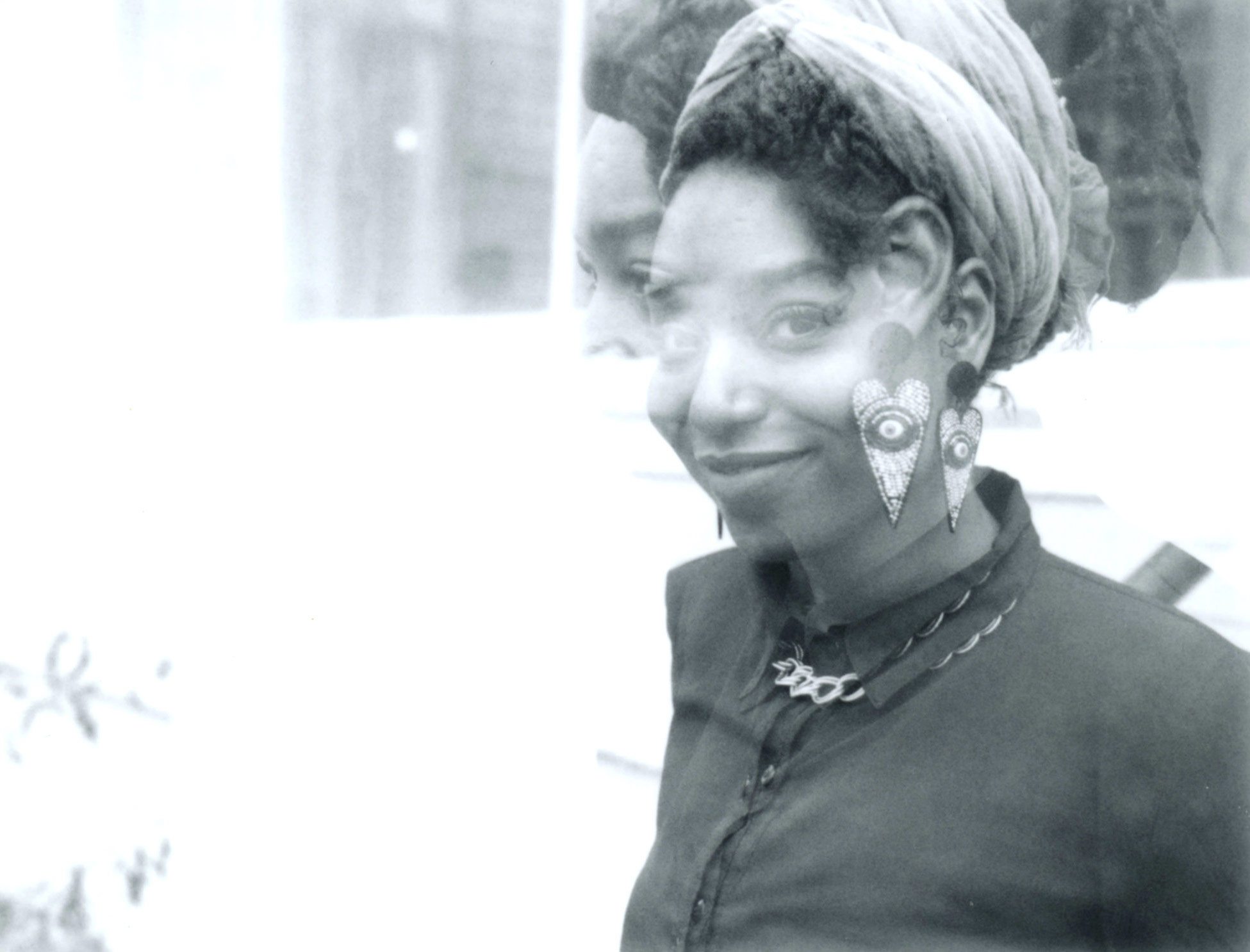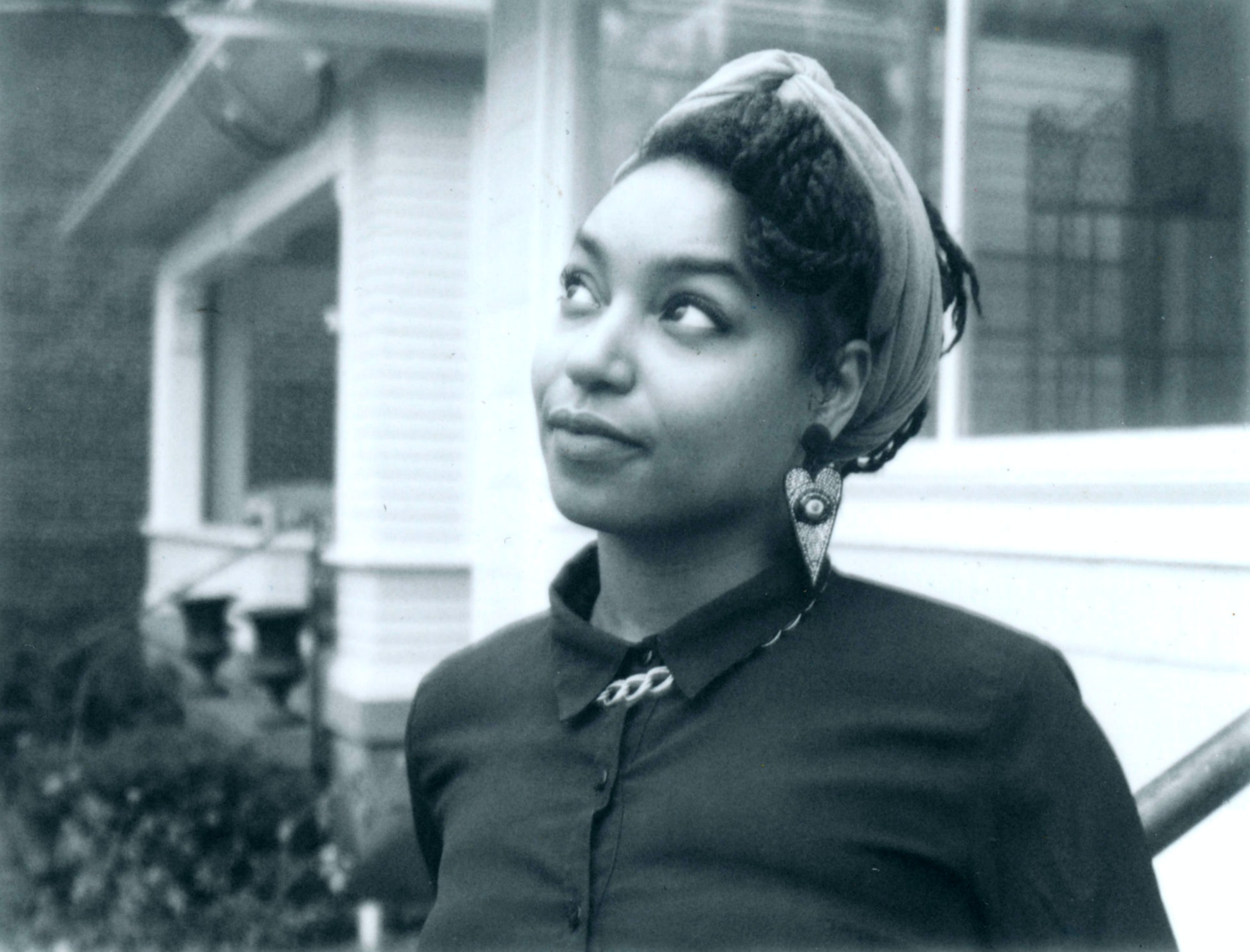
- Interview by Tammi Heneveld January 30, 2018
- Photography by Angelina Castillo
Jessica Bellamy
- designer
Jessica Bellamy works with creatives at the local and national level to promote conscious and responsible design practices for social change through traveling workshops and motion graphics. Here, the Louisville-based designer discusses her mother’s early influence on her creative drive, the powerful effects of collaboration, and how she’s inspiring designers to join forces with their local communities through GRIDS, the Grassroots Informational Design Studio she founded in 2015.
This digital feature is in partnership with our friends at Adobe to highlight the Adobe Creative Residency, a program that empowers talented individuals to spend a year focusing on a passion project while sharing their experience and process with the creative community.
Can you describe the creative path you took to where you are now? I drew a lot as a kid, especially comic books about monster worlds, or underdog and anti-hero characters, but my mother had a big influence on my creativity growing up. She was a draftsman in the military and would draw pastels on silk in her free time. As a military enlisted single mom, she wasn’t home as often as I would have liked, but when she was, she encouraged us to make things by hand and gave us drawing assignments. I think my mom pushed us to draw and create because she wanted to give us an outlet and a skill to fall back on.
By high school, I knew I wanted to do something at the intersection of art and the representation of people of color in the media. But when I got to college, there wasn’t a sole course of study specific to what I wanted to do, so I took a multitude of courses: I earned BFAs in graphic design and drawing, a BA in pan-African studies, and I minored in communication. I grew up in Louisville, Kentucky, and I was interested in figuring out how to raise cultural competency and create more dialogue around some of our city’s major issues.
Around the end of my sophomore year, I’d started working as a research assistant-turned analyst at the University of Louisville. We worked with kids with genetic disorders, like Williams syndrome, Down syndrome, and 7q11.23 duplication syndrome. At that point, I already developed an interest in data visualization and information graphics—the first infographic I’d made for a paper I’d written about pre-colonial Africa and its scientific accomplishments. At the lab, we tested kids, then helped their families understand and share that information with teachers and caretakers in order to create a plan for that child’s specific needs. Working there gave me a deeper interest in the observation of social behavior and how data is organized. I often had to write observational reports, gather and organize data, and assist grad students with creating their own dissertations and papers.
It was also around that time that I began working with local organizations like Kentuckians For The Commonwealth and the Affordable Housing Trust Fund. I wrote my Summa Cum Laude thesis around the question of which creative field was best for facilitating conversations about cultural competency that would help shape people’s perceptions. After studying fine art, design, and intercultural communications, I realized real dialogues needed to happen in spaces where art is evocative rather than provocative; and graphic and experiential design were those types of spaces.
I knew of some wonderful studios combining design and community engagement, such as the Design Studio for Social Intervention up in Boston and Creative Reaction Lab in St. Louis. Then, in 2015, I ended up creating my own business in-between those worlds, called GRIDS—the Grassroots Information Design Studio, where we do community organizing and information graphics at the local level.
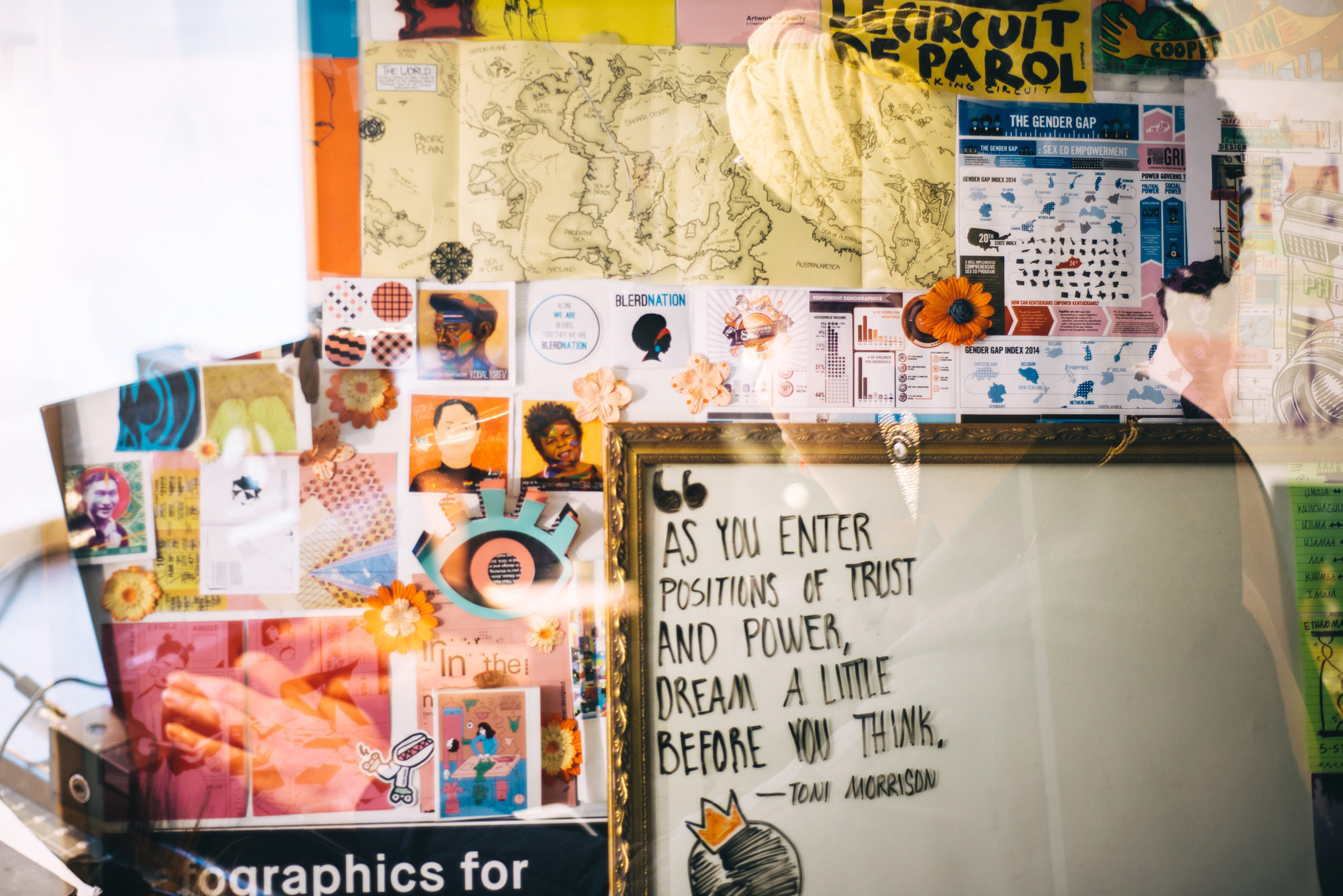
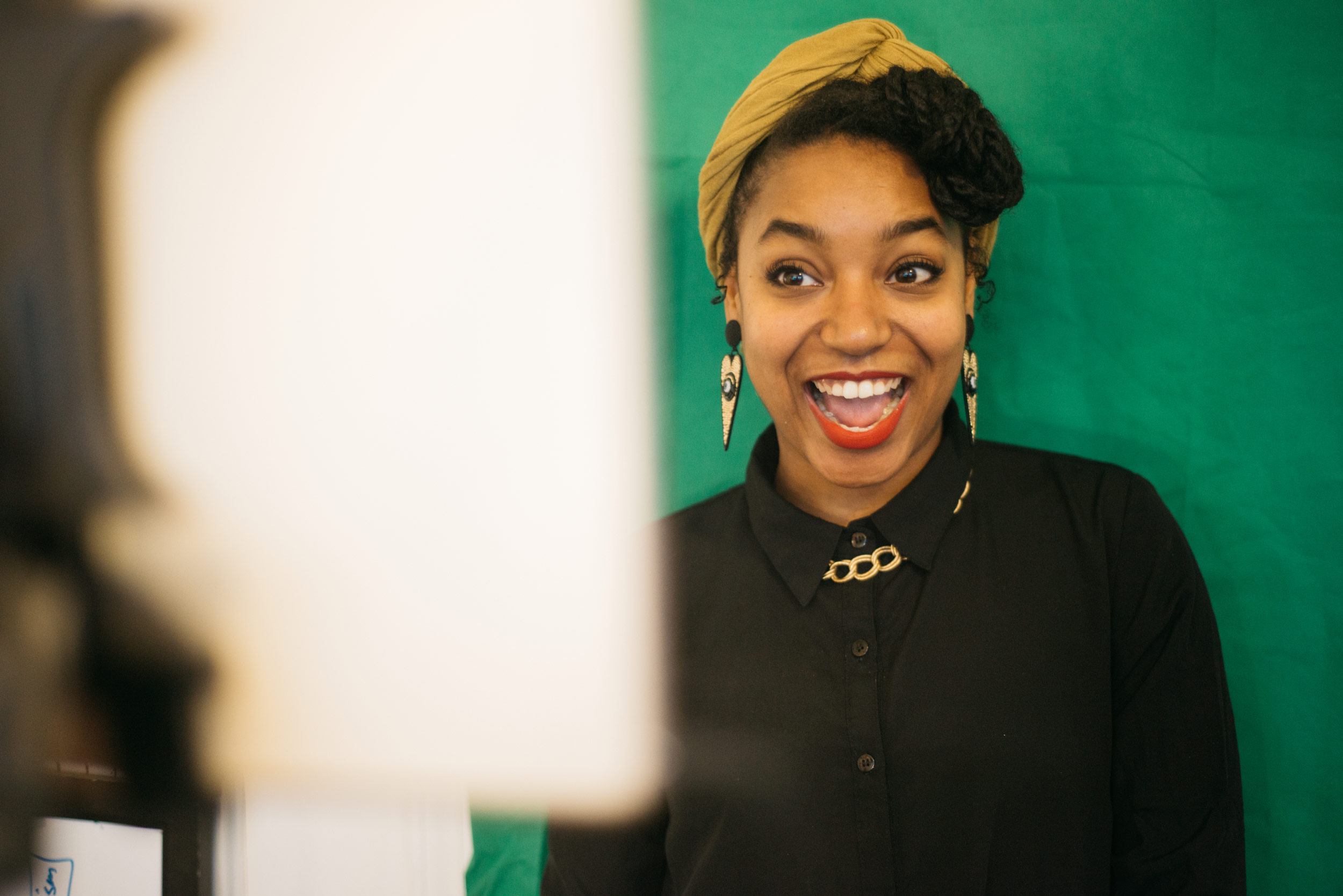
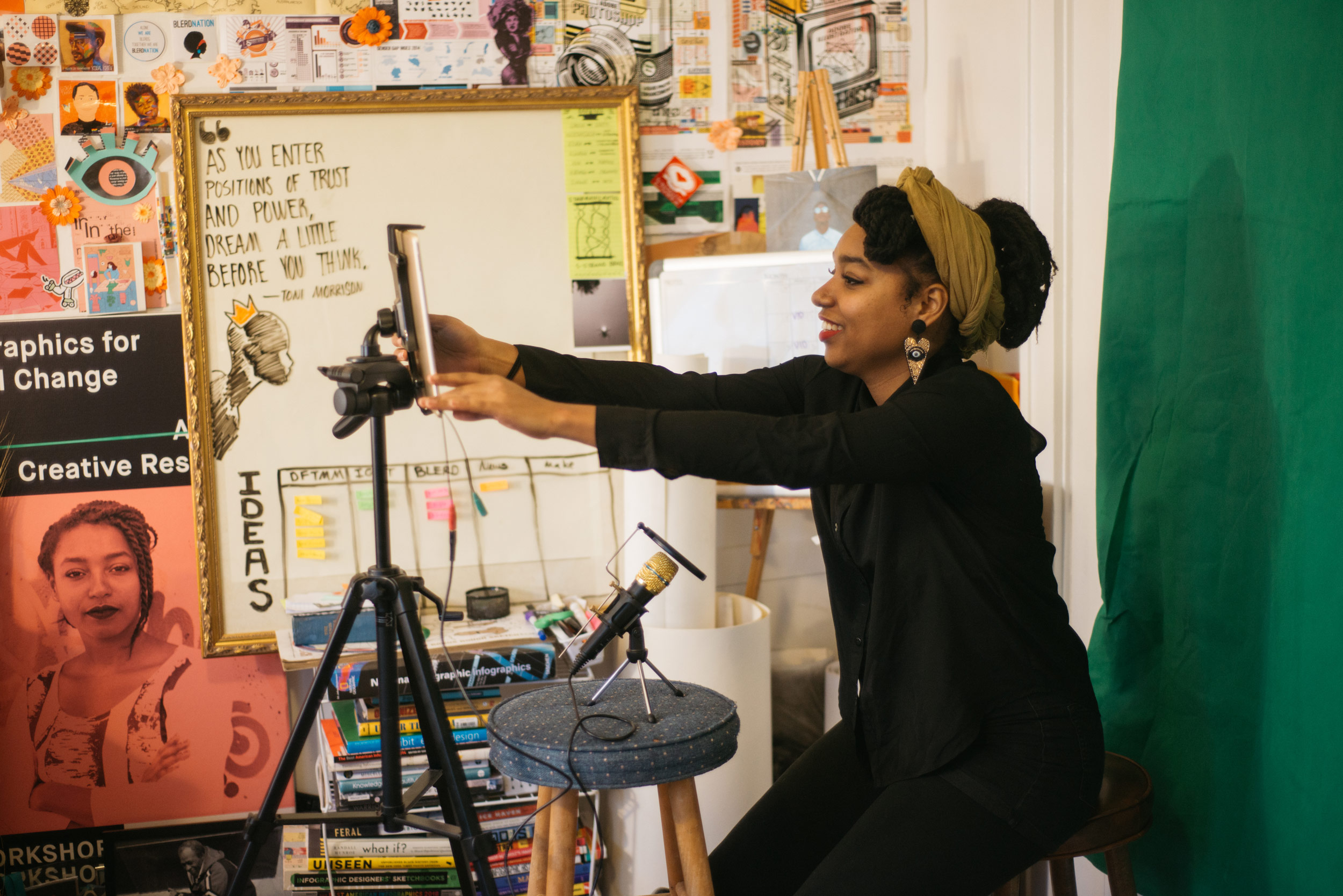
Can you tell me about what inspired you to start GRIDS? It was inspired by a report I made graphics for with Kentuckians For The Commonwealth. It was the first time I saw someone walk into a public forum, armed with data I’d designed, and contradict a council member based on that data. I felt so powerful, like a forgeman standing on a mountain, proclaiming, “Here are your weapons, heroes! Now go forth!” (laughing) And they did! It felt so good.
I wanted to pursue more of that type of work. Through GRIDS, I began holding workshops where I’d teach people how to incorporate design justice into their work; mostly community leaders or people who had little to no design skills. The goal was to help them raise the quality of their communication strategies and the materials they were distributing to gain more support, whether that’s from policymakers or community residents.
How did you get involved in the Adobe Creative Residency? One of the managers of the residency reached out to me after hearing my interview on the Revision Path podcast with Maurice Cherry, and told me I should apply. So I sent out my project, and I was lucky enough to be accepted. It’s pretty amazing.
Is the project you’re doing for the residency an extension of your work with GRIDS? Yes, though I’m now working specifically with creatives in addition to making motion graphics. It’s a great opportunity to talk to folks about how to build and grow using the different principles I’ve learned through working with community leaders.
The design industry is such a powerful force. Designers have an opportunity to use their talents to create and support mindful, authentic narratives featuring unconventional and underrepresented perspectives and faces. Unfortunately, the nature of the design industry is divisive and the design community is laden with competition to see who can be the most innovative and relevant. When you’re working in the social justice sphere or on projects of intrinsic good, the work needs to have longevity and impact. When different perspectives and skill sets come together, we can create a far better campaign than we would individually. I want people to connect with each other, as well as with people organizing at the grassroots level, to see what type of project we can build from that.
“I think my mom pushed us to draw and create because she wanted to give us an outlet and a skill to fall back on.”
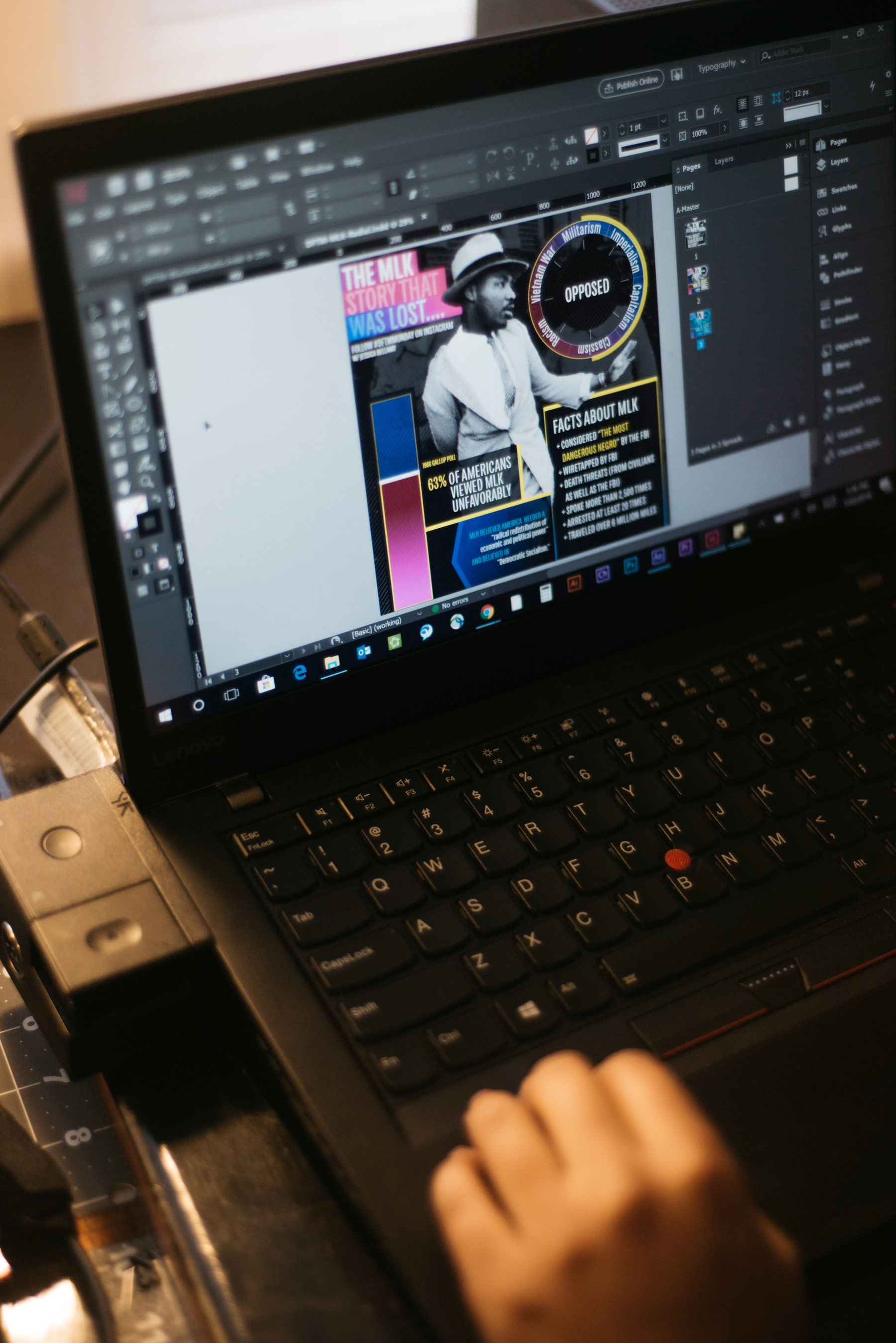
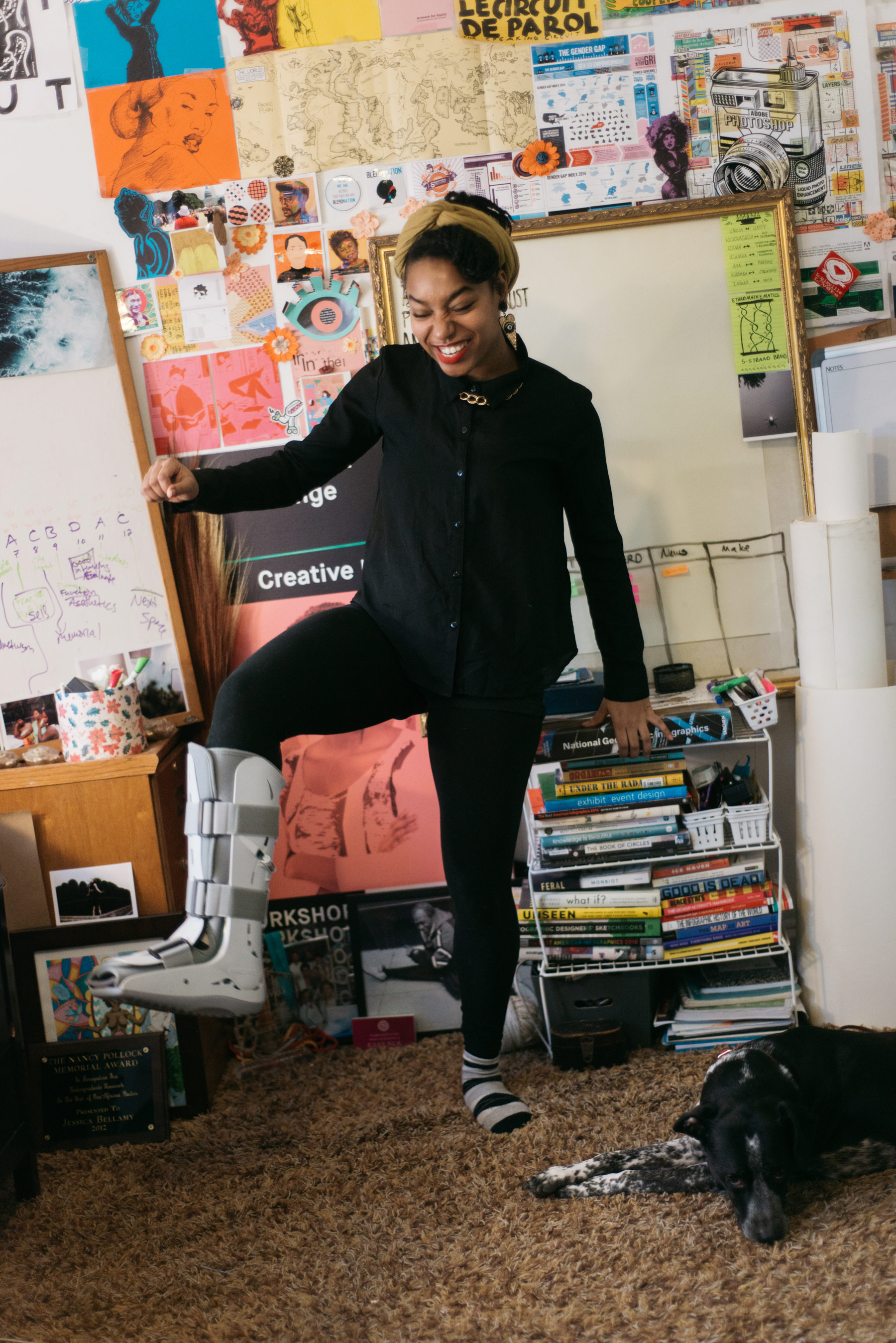
How many of these workshops have you done so far, and how many do you have left to go? There have been seven so far in cities like Minneapolis, Detroit, Louisville, San Francisco, Cincinnati, and Pittsburgh. I have one coming up at UCLA in January and have received requests for others, but there aren’t specific dates on the table yet. Adobe also suggested some AIGA events, some of which I already had on my radar, like the Design + Diversity conference. I’ve been very flexible and open. It’s been really good.
How large are the sessions? It depends: the most intimate was when I worked with the Chronicle Books creative team, which was probably 25 people. The biggest one was in Louisville, with about 100 attending the lecture, half of whom participated in the hackathon. All of the others have been a mix.
What is a typical workshop like? I first reach out to representatives from a non-profit in a city to ask if there’s any existing or potential content they’d like to be made into an information graphic for free. We then discuss a communication strategy for the piece. The result of that conversation is what drives my conversation with the creatives. I put together a creative brief that includes a slew of data, which could be statements, quotes, testimonies, or hard facts and numbers. It’s usually a mixture, depending on the circumstance of that nonprofit’s particular communication strategy.
Then we figure out what the media vehicle is—does it need to be a web info graphic? Will it be shared on social media? Is it a mailer or a flyer that will be handed out? What are the dimensions? Once those parameters are established with the nonprofit, I’ll go into the workshop space and lay out major principles of conscious and responsible design to guide the creatives.
After that initial training session, I have the creatives put those principles into practice and have everyone start drawing their ideas with Sharpies. I’ve found that when you have people start ideating on computers, they often prematurely commit themselves to a narrow design solution versus exploring a range of prototypes and approaches. When we get to the end critique, we have the representative from the nonprofit or community organization come in and provide them with a wide variety of solutions. We ask the rep, “What do you feel is working, and why?” I think it’s easy to identify problems, but when you focus on what is working, and why, you get more at the crux of the solution. This type of approach raises important questions and provides more tangible action steps for everyone involved.
Those conversations are important to have, because a lot of beautifully designed campaigns I see are more about education and explanation than evocation and action, “This is what needs to happen, and here’s how you do it.” These workshops are really about trying to cultivate a communication strategy around action steps.
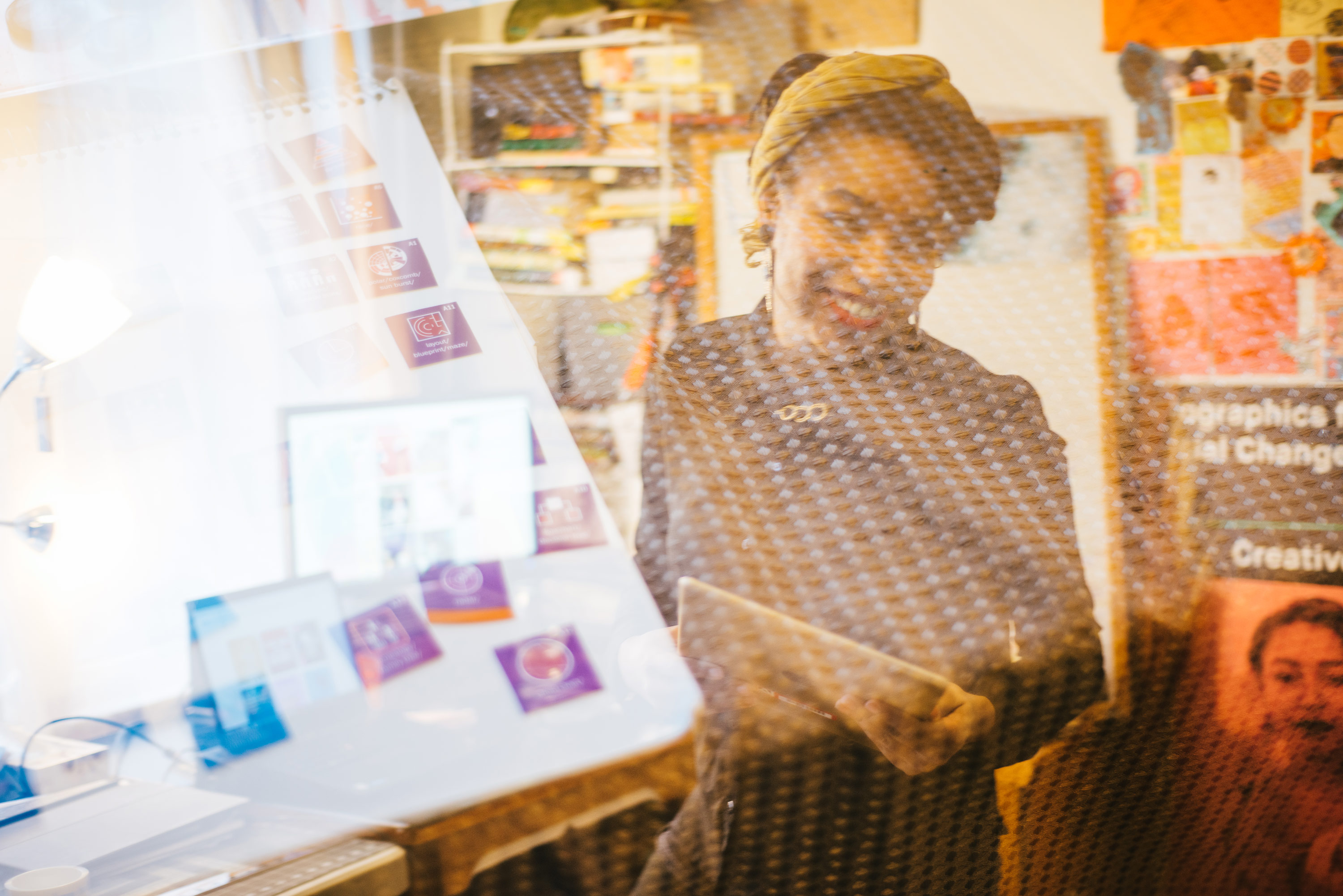
“The design industry is such a powerful force. Designers have an opportunity to use their talents to create and support mindful, authentic narratives featuring unconventional and underrepresented perspectives and faces.”
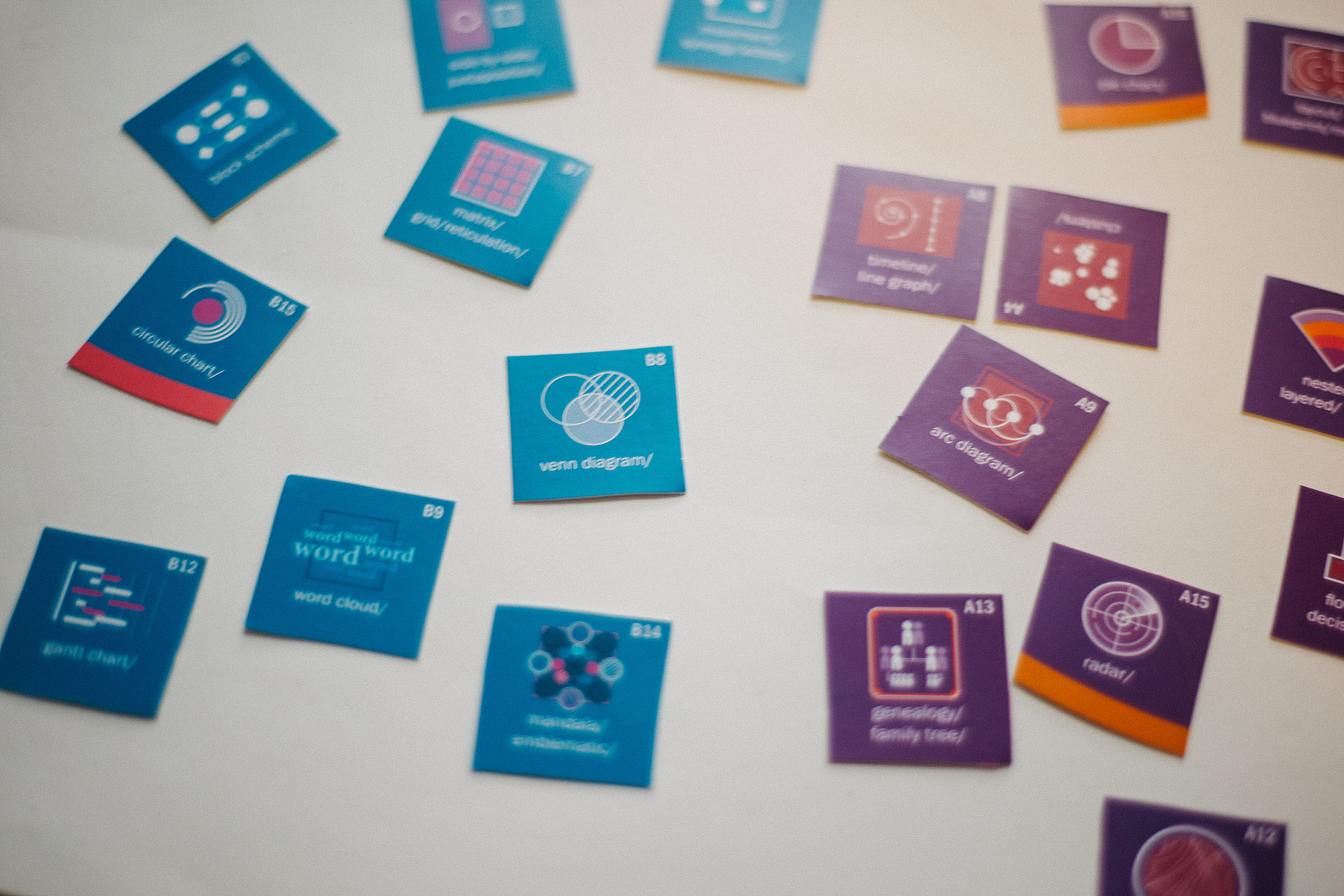
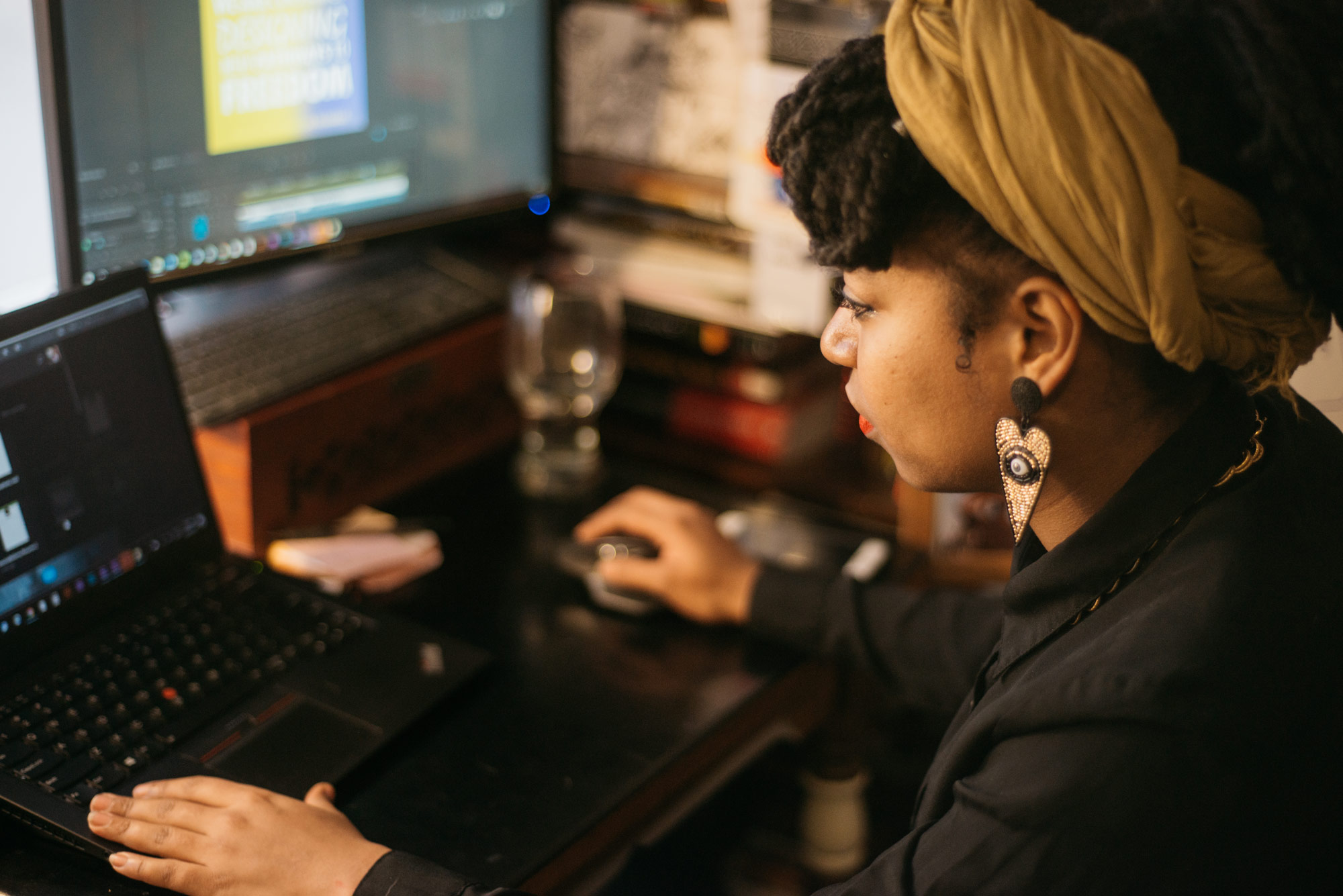
What unique opportunities do you think you’ve been able to have as a result of choosing to become a designer? If I wasn’t a designer, I don’t think I’d have as much of an outlet for doing work with an emotional identity. Extrapolating data is a way for me to vent my creative and intellectual frustration and restlessness. It’s so important that we, as creatives, stay abreast of what’s going on in government and continue to mobilize data around both the quiet and loud violences being perpetrated against marginalized people. Being a design justice practitioner, creating design campaigns that educate, equip, and motivate are a big part of my work; but by embedding more emotionality into my work, I’ve started creating pieces that have the potential to fuel reconciliation or healing for people of color. I don’t know what other kind of work would give me that kind of pride, fulfillment, or release.
What are your goals for the coming year? I’m going to spend more time working on the motion graphics portion of my residency, so I’ll be creating an episodic web series to help people replicate successful social change projects.
After the residency, I’d like my next journey to be in data journalism. I’ve realized that I love GRIDS for what it is, but there are certain compromises involved in a lot of projects. I’m at a point where I want to create stories that lay the framework for direct action for change. I’m excited about exploring this new path.
Biggest creative risk you’ve taken in your career: This residency.
One thing you can’t live without while working on a project: A two-hour break.
Currently obsessed with: Star Trek: Discovery and How to Get Away With Murder.
Three greatest influences:
- My mom.
- Antionette Carroll, the creator of the Creative Action Lab in St. Louis.
- Annalise Brown, the first person I saw use data to make non-representational abstract drawings, and who emboldens others to live at their full potential.
Favorite space to work: At a friend’s house, surrounded by people absorbed in an activity or with each other.
If you weren’t a designer, you’d be: Working in the sciences.
